How to grow ferns – when and how to plant and care for them
Learn how to grow ferns to enjoy the texture and form of these versatile plants in many areas of your garden


Once you know how to grow ferns you will appreciate how these versatile plants can add texture, form, and movement to a range of areas in the garden.
Whether delicate and feathery, with gently unfurling rolled heads, or bolder forms, ferns mingle well in among a range of other plants in beds and borders. You can choose from evergreen and deciduous varieties to add interest throughout the year as part of your garden ideas.
Whether you include ferns in a naturalistic planting design, in woodland settings among other woodland plants, lending informality in borders, starring in stumperies, adding interest under trees, or for container gardening ideas, they are available in a range of sizes, shapes, and even colors, and bring a touch of the wild to all types of garden.
In addition, ferns are easy to grow, long-lived, and pretty trouble-free, so it is worth taking a closer look at these easily recognized yet often taken-for-granted non-flowering plants, and getting to grips with how to grow ferns.
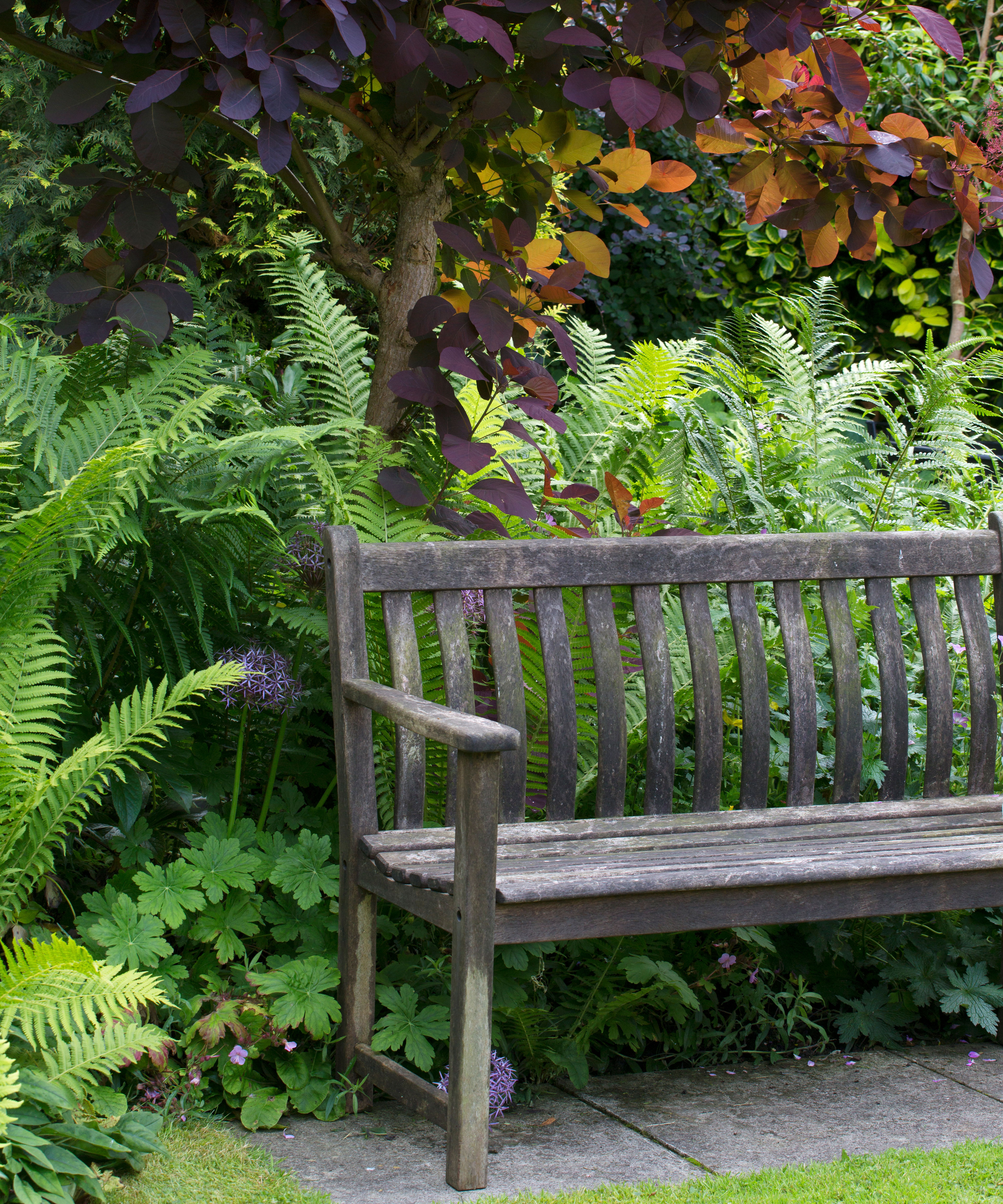
How to grow ferns
Extremely popular in Victorian garden design, with the plant hunters bringing back a plethora of species, ferns are valued for their long-lived foliage.
Ferns exist across the world in every climate, so there are varieties to suit every hardiness zone.
When you're considering how to grow ferns, most like shady, moist, but well-drained conditions, making them among the best shade plants for darker corners of the backyard, or for north facing garden ideas. Conditions vary, though, with some varieties of ferns, such as asplenium, which happily pop up in cracks in walls or in tufts on rocks, while others work in dry shade, and there are aquatic ferns that form colonies in water.
'I really love making spaces with ferns for people to enjoy, whether that be a shady corner or in some containers to enjoy an odd unusual fern. In dry shade, I may opt for some polystichum, but for an area that wants to be lush and full maybe some dryopteris and athyriums,' says Aimee-Beth Browning, horticulturist at RHS Garden Harlow Carr.
When to plant ferns
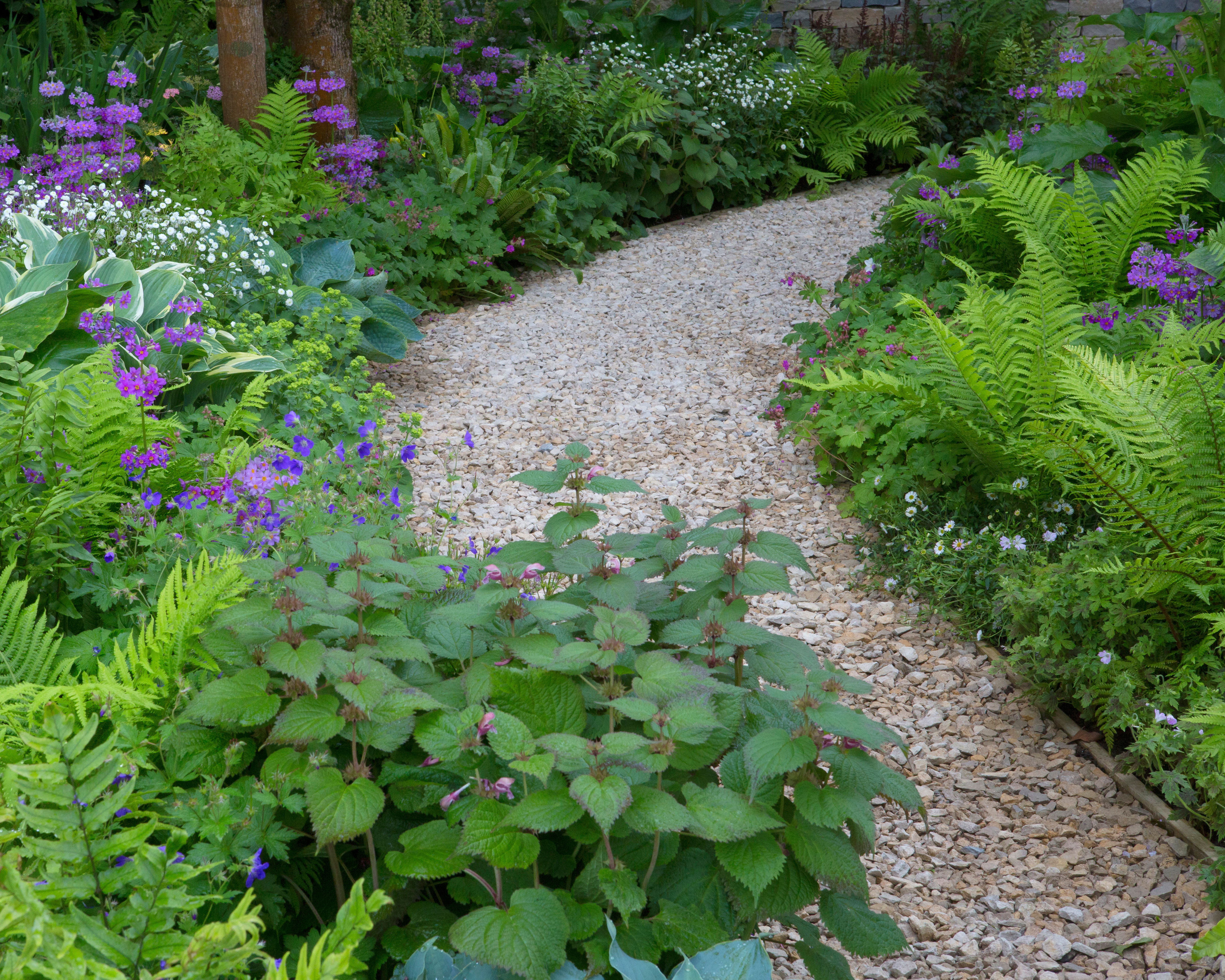
Ferns can be planted year-round as long as the ground isn’t frozen or waterlogged and it isn’t very windy. The optimum time to plant them in the garden, however, is in spring or fall to give them time to settle in before the extreme heat or cold.
Fall is the best time for planting in drier positions as it allows the roots to establish over winter and spring, and the fern then fares better in the heat of summer.
Instead of producing seeds or flowers, ferns reproduce through spores, which are found in casings (sporangia), and grouped into bunches (sori) on the underside of their fronds, which unfurl from coiled buds.
Ferns are perennials; some die down in winter, while others are evergreen plants. Hardy ferns, which are the majority available to buy, can remain outside all year without any frost protection, so are excellent additions to your winter garden ideas. Half-hardy varieties, such as tree ferns, can grow outside year-round in mild areas, or in a sheltered spot, with added winter protection, such as straw or fleece.
Potted ferns are available year-round to buy from garden centers, specialist nurseries, and online, and can be among the best plants for pots all year-round, but do check the label to see if they are hardy, half-hardy, or tender.
If you have half-hardy or tender varieties you need to know how to protect plants from frost. They are best planted in containers so you can bring them inside.
Where to plant ferns
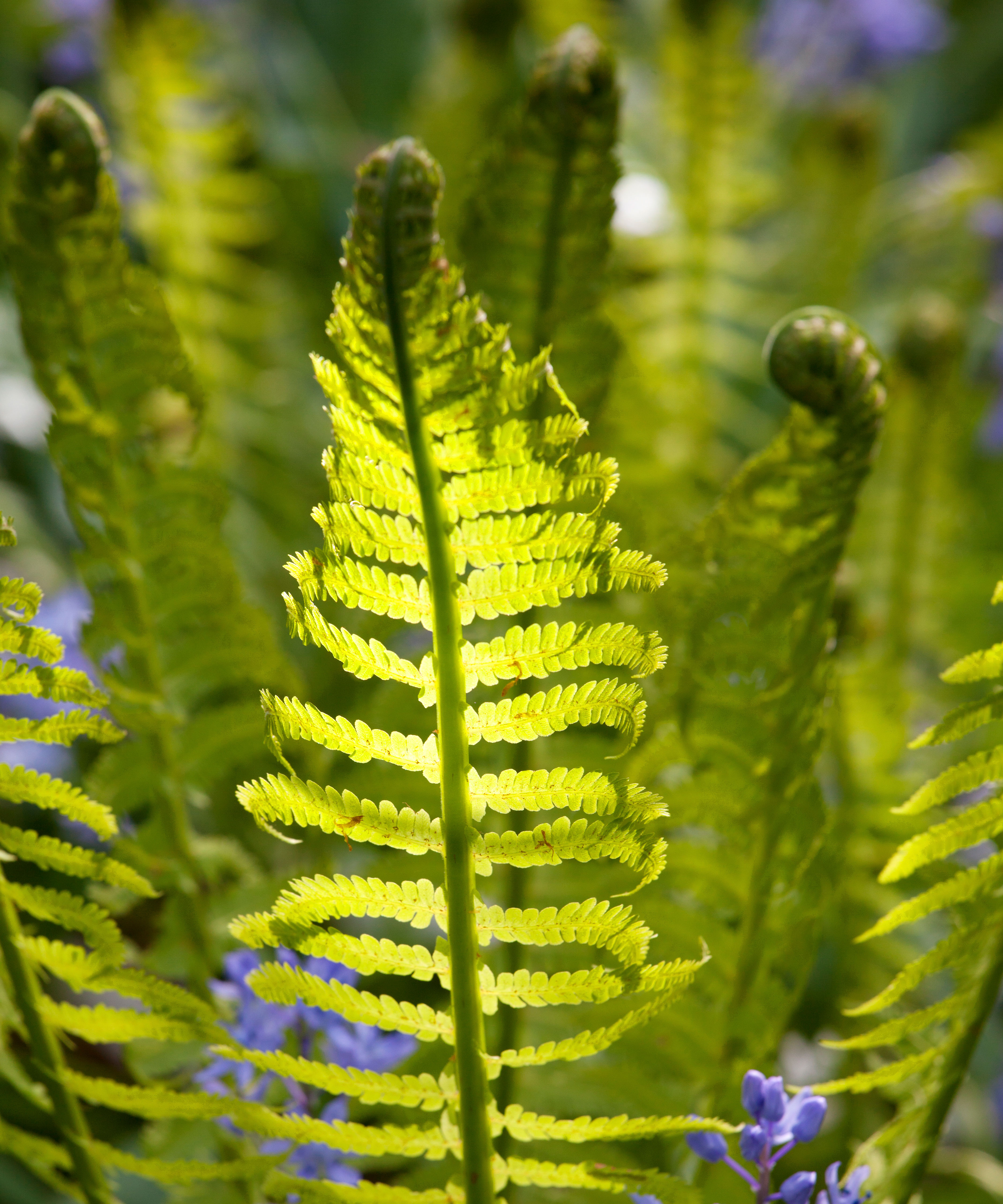
For success in how to grow ferns, select a spot with light or dappled shade, as few will tolerate full exposure to the sun, and one that is sheltered from strong winds. Overhead protection from a canopy of trees or being placed by shrubs will increase the humidity, which helps them thrive.
The ideal soil type is neutral to alkaline, moist but not waterlogged, rich in organic matter, and with a high leafmould content, but some ferns will tolerate dry or wet soils.
'Most ferns commonly grown are used to woodland conditions, which means dappled shade, moist and generally low-nutrient soil. They seem to like the addition of chipped wood bark every year as a mulch, which improves moisture retention, reduces weed competition, and depletes the soil of nitrogen,' says Andrew Leonard from the British Pteridological Society.
How to plant ferns
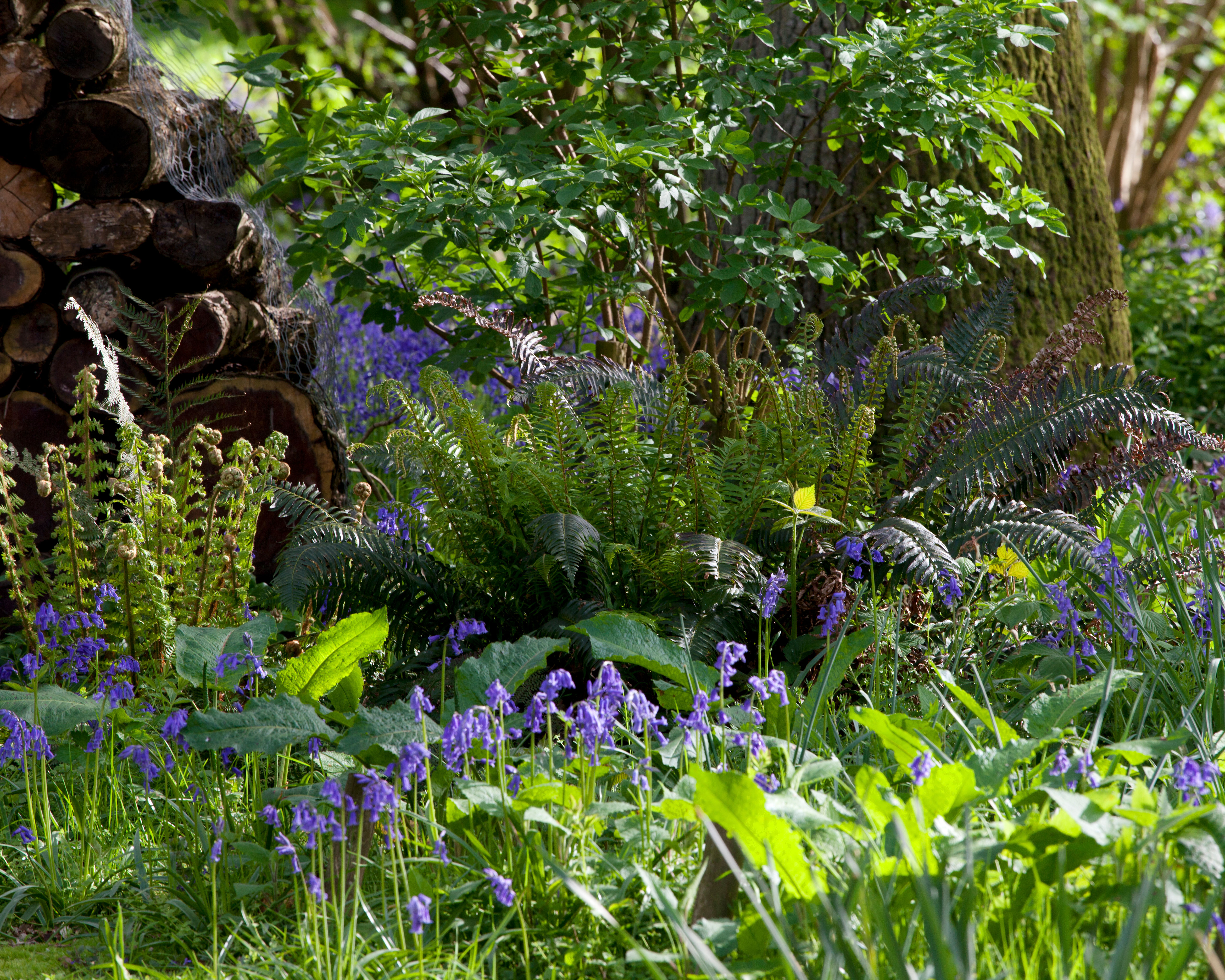
Before planting ferns, dig in plenty of compost or leaf mulch to the soil as this improves the structure and helps retain moisture, especially in dry shade areas under trees.
Ferns that die back in winter tend to prefer wetter soils in more open spots, and evergreen varieties like it a little drier.
When planting a group of ferns, check the mature spread and space them accordingly. Or for a more instant impact, plant them more closely, and then when they become congested you can divide plants.
The planting hole needs to be twice as wide as the fern’s container and to the same depth. Using a fork, break up heavy soils at the bottom and around the hole so the roots can penetrate, and for light soils firm the soil at the base. Tease out the roots, plant at the same level as it was in the container, and then add plenty of organic matter before firming down, watering the plant in, and topping the soil with mulch.
'Digging a larger hole and adding some good organic matter like leaf mulch or additional soil for the fern to adapt into is really helpful. An additional layer of organic mulch, like leaf mulch or leaves themselves, pine needles, or very finely shredded bark, will also help encourage the roots and lock in and attract moisture. They will take time to adapt and you may not see a result until the following year or the next, but after that, they can flourish. So time and patience are important – don’t give up!' adds Aimee-Beth Browning.
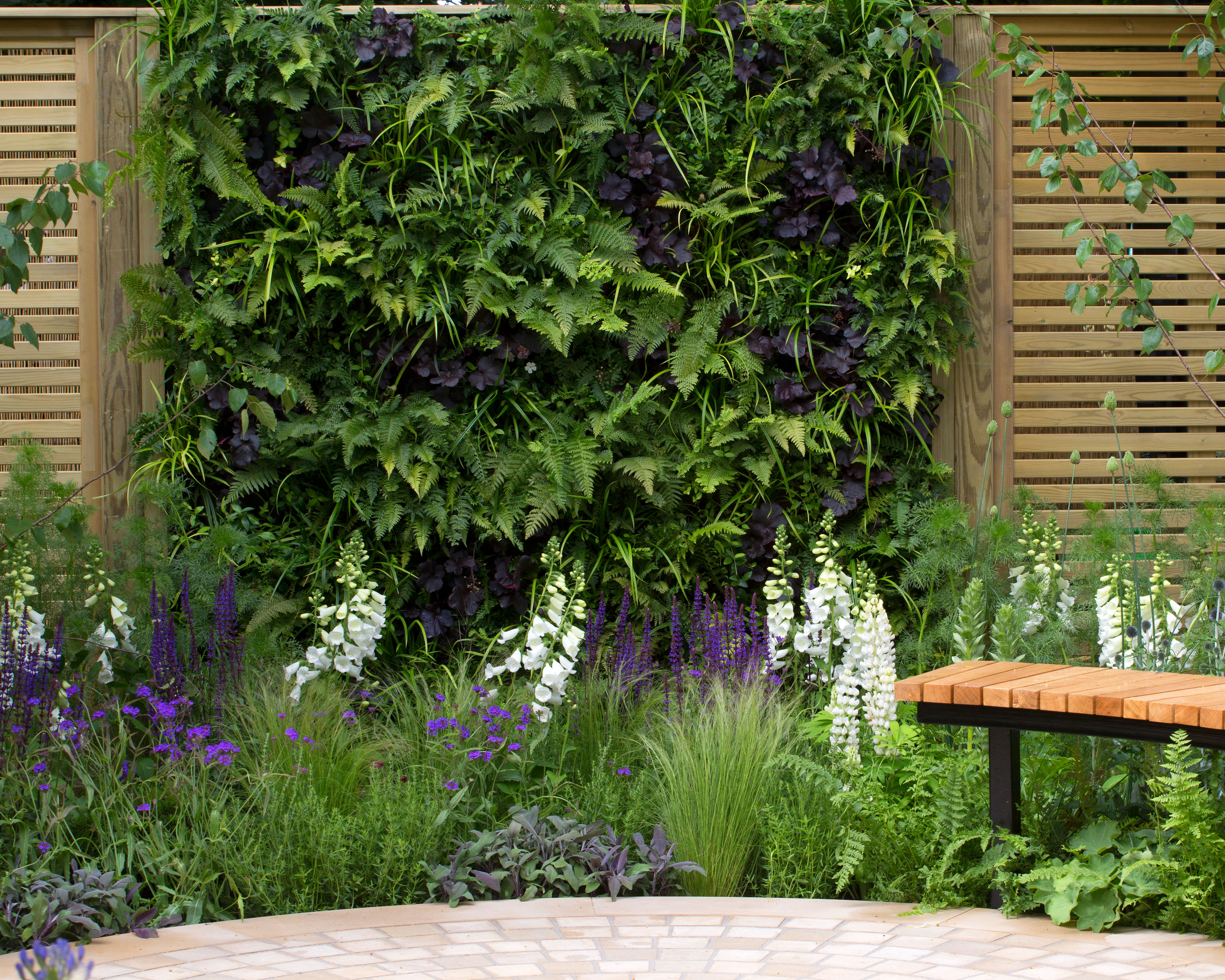
Where is the best place for ferns to grow?
There are many ideal places for ferns to grow. Wherever you pop ferns in the garden they bring with them the effect that nature has done the planting. Combine with other shade lovers in flower bed ideas for a lush foliage display.
Companion planting ferns with the likes of hostas, epimedium, astilbe, dicentra, galanthus, polygonatum and cyclamen, allows you to play with colors and textures.
'Ferns are great for adding shape and texture, while also providing a wonderful backdrop for other plants. Drought-tolerant ferns, such as Dryopteris filix-mas and Polystichum setiferum, are great choices for a tricky shady spot. Hellebores, bleeding heart, Anemone nemorosa ‘Allenii’, Milium effusum ‘Aureum’ and daffodils make perfect spring companions. For fall color add Liriope muscari, colchicum and Japanese anemones,' suggests Asa Gregers-Warg, head gardener at the Beth Chatto Gardens.
Where you want a year-round display under tree canopies, use evergreen rather than deciduous ferns, plus they are more drought tolerant. Ferns are natural along watercourses as most prefer damp soil, so mix them in with primulas and other marginals around a pond or stream as pond plants.
'The Royal fern, Osmunda regalis will make a stunning focal point near a pond or stream where the soil is constantly moist. Forming a tall, elegant clump, its unfolding fronds carry a tint of copper before becoming green, until fall when they turn a lovely rusty brown,' says Asa Gregers-Warg.
You could line pathways with ferns, especially ones made of traditional brick, stone, or gravel, as garden path ideas, and they are also very useful to add to vertical garden ideas, including living wall ideas.
Many ferns are ideal for rock garden ideas or peeping out of dry stone walls for an aged and natural feel. 'I love to take inspiration and try to mimic how they grow out in the wild. You can find them growing on tree branches and walls which have collected organic matter over time to nurture the fern, and the rhizome just creeps along using the surface for support. Polypodiums. such as P. vulgare and P. cambricum have some amazing cultivars that look feathery and elegant and just plain cool. I like to experiment with them in and around rocks, and planting around crevices,' adds Aimee-Beth Browning.
Low-growing ferns could also be used as groundcovers in problem areas of the lawn or under evergreen shrubs. On the other end of the scale, dramatic tree ferns look impressive when planted as a single specimen, and you can grow ornamental grasses or tightly clipped shrubs or topiary around them for contrast. Also, create a tropical garden scene with a copse of tree ferns underplanted with exotic-looking foliage combinations.
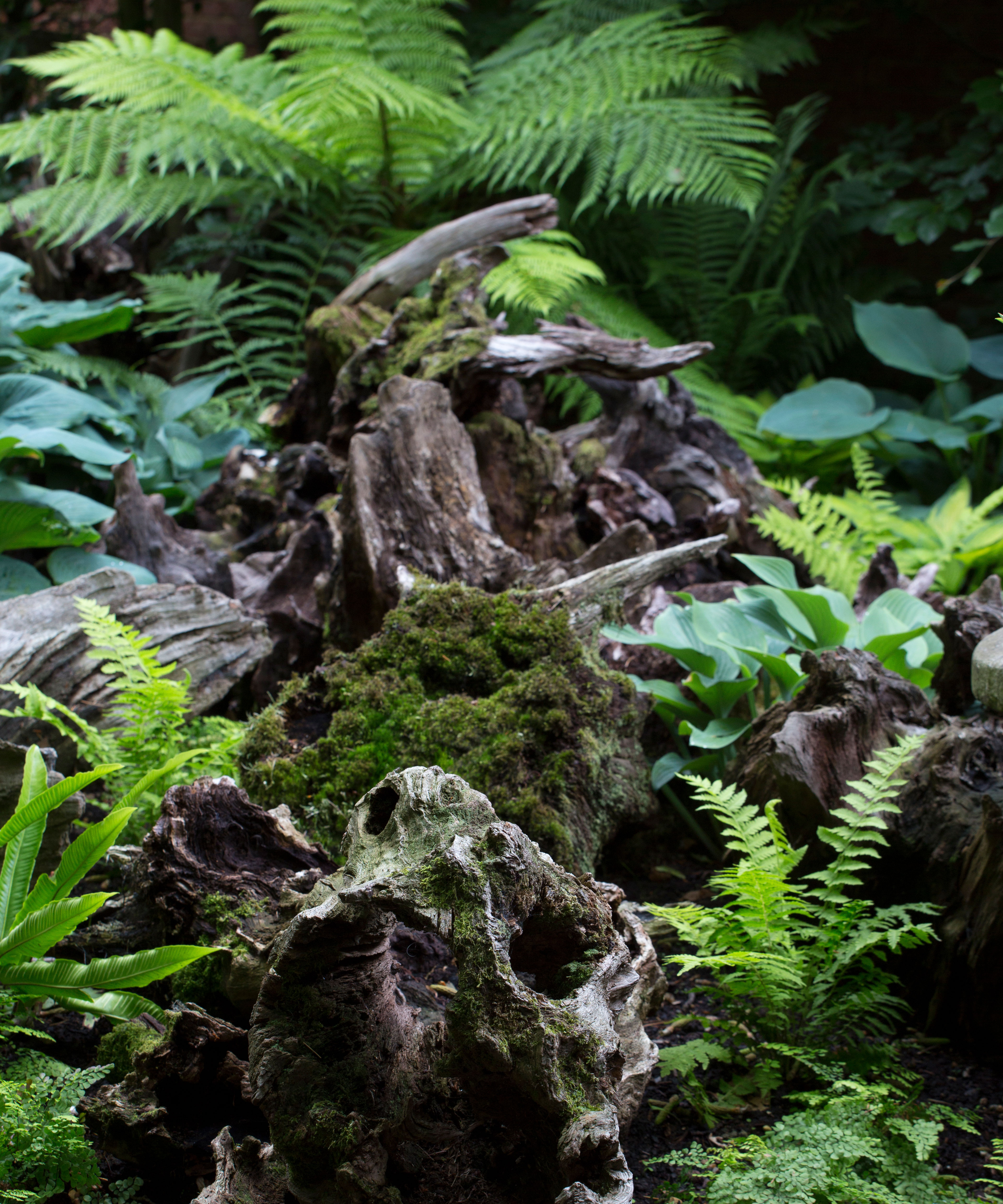
What is the best way to grow ferns?
One of the best ways to grow ferns is to create a little micro-habitat with a naturalistic collection in a stumpery, which is also attractive as a wildlife garden idea and useful for improving a shady corner. Stumperies provide the perfect habitat for insects and invertebrates, and also a spot for birds to find water in the pools lingering from rainfall gathered in hollows in the stumps.
'The upside-down tree stumps provide a perfect shady, damp habitat for ferns. A shady damp area lends itself best to siting a stumpery. Stumperies are low maintenance garden border ideas as the format is to plant the stumps and surrounding areas densely so as to envelop and complement the stumps themselves. Therefore exposed soil is minimal, which in turn reduces weed growth,' explains David Perry, garden manager, RHS Garden Rosemoor.
'Adding a good layer of leaf mold prior to planting is essential, and some specimens will need feeding, especially those planted in small pockets within the stumps. Remember to use hardwood only as softwood will degrade too readily,' he adds.
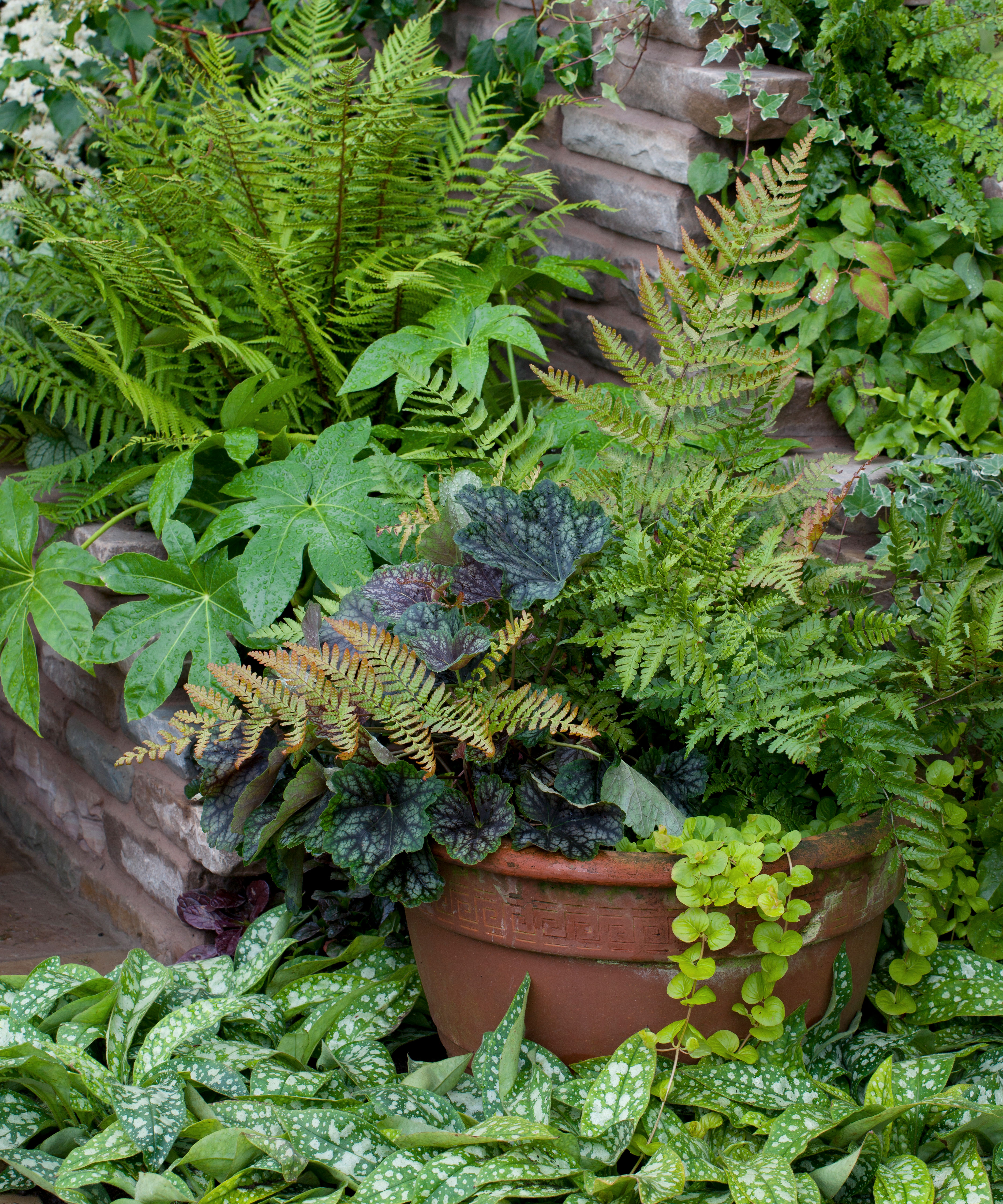
How to grow ferns in pots
There are many ways to grow ferns in pots, whether you’d like to grow them on their own in containers, or in a mix with other plants. The attractive foliage with a range of greens but also silver, burgundy, and bronze, offers creative combinations.
Any fern you like can grow in a container, as they are not particularly deep-rooted. Some are more delicate, but many are so hardy and tough you can’t fail with them. The main thing to remember is that ferns require moist conditions and containers will dry out more quickly.
Water regularly to keep the soil just moist and add a general fertilizer during the growing season. Pots can be moved to give you a lot of scope for selecting the perfect spot and creating groupings, from a mini-fernery effect to mixed plantings with other shade lovers. You can tailor the growing conditions to suit the particular ferns you choose.
All types of containers can be used but keep in mind that as ferns are shallow rooters, smaller or shallow pots will make it easier to keep the hydration of the soil correct. Ferns are among the best plants for hanging baskets.
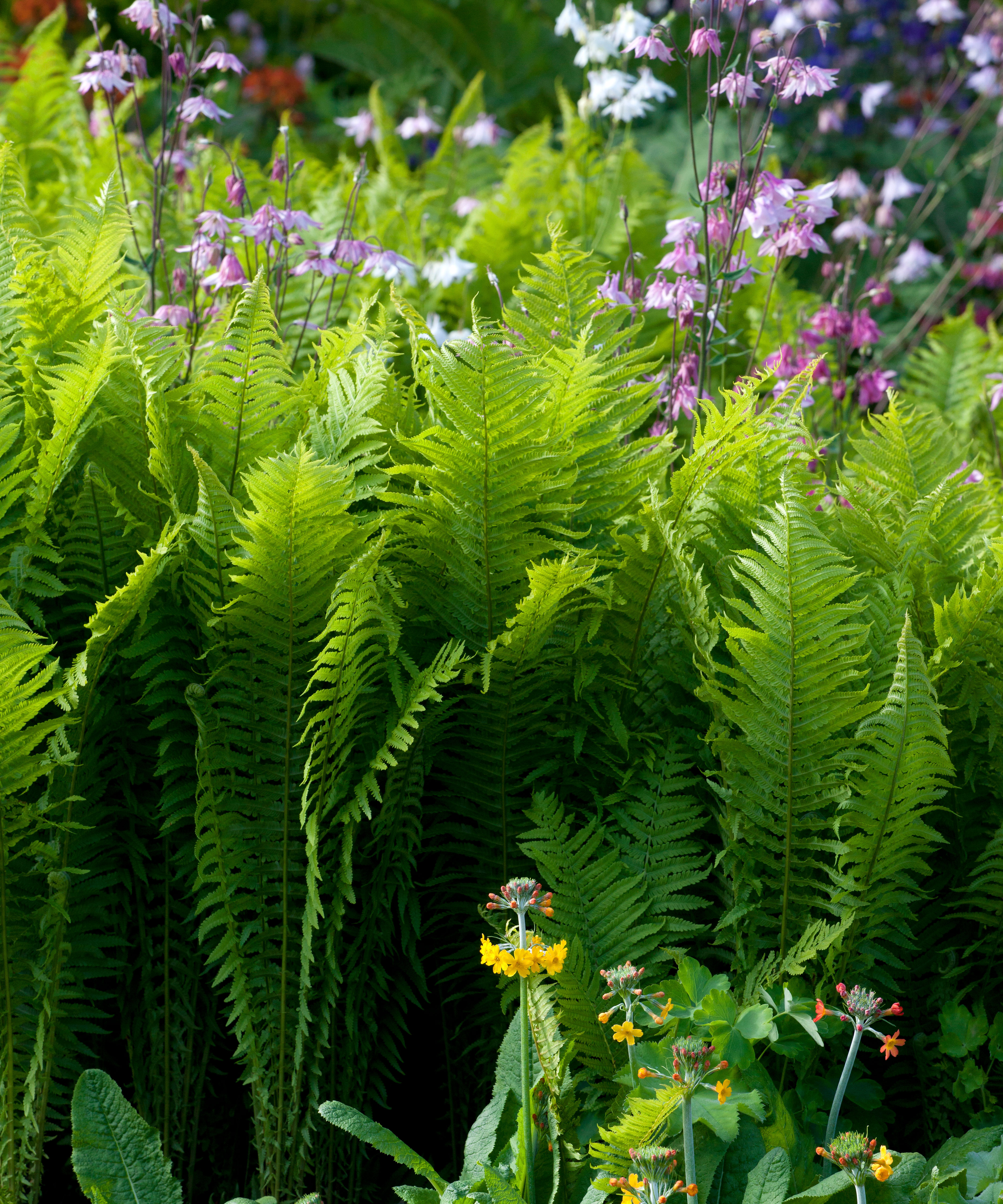
How do you keep ferns healthy
Ferns are fairly low maintenance so you can keep the healthy by ensuring they are planted in the correct spot.
Feeding generally isn’t necessary unless the soil is poor, and if that is the case, use a well-balanced fertilizer in spring, such as fish, blood and bone. Tree ferns will appreciate a monthly liquid feed applied to their trunks from spring to early summer or a scattering of controlled-release fertilizer at the base each spring, along with a misting of water on the trunk to help keep them damp.
Weeds aren’t really an issue as ferns make dense clumps and your mulching will also suppress weeds. Old fronds fall naturally and degrade, but if you want to prune ferns, just cut away old, dead fronds in late winter or early spring and remove to encourage good air circulation.
Winter protection of half-hardy ferns is important if you can’t move them indoors. Place a layer of stray on and around the crown, tie in the fronds with care and wrap the plant in fleece. To propagate your ferns, divide clumps and replant in spring.
There are few pests and diseases that affect ferns. Slugs and snails may nibble the young fronds and in containers, ferns may be attacked by vine weevils.
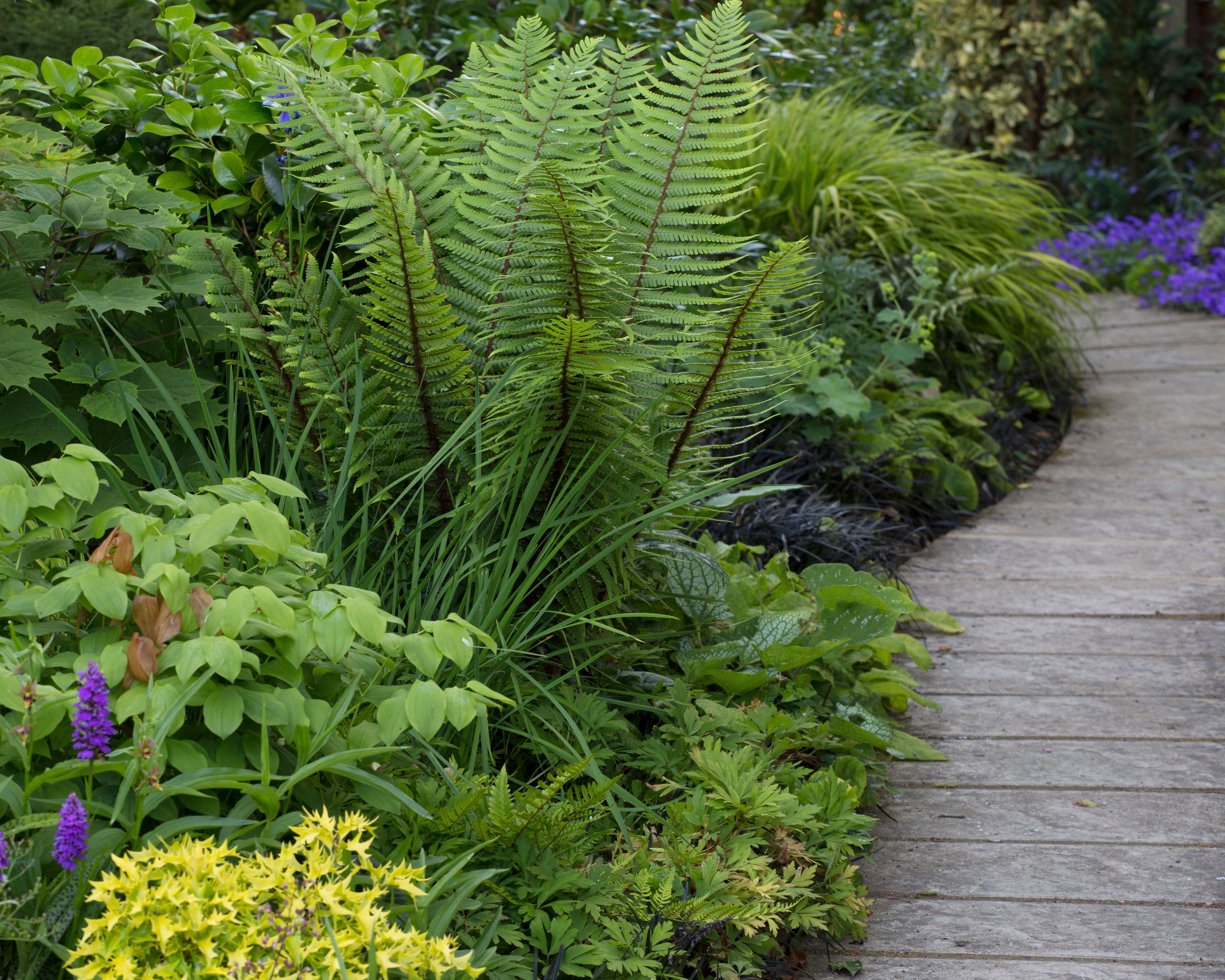
How often should ferns be watered?
Water newly planted ferns regularly for their first year. Through periods of drought, your ferns will need watering if the soil is dry, and remember to water directly to the roots rather than on the fronds to avoid foliage rotting. Topping up the mulch each spring helps water retention and will enrich the soil.
'When first planting ferns into a dry shady area, especially under trees and shrubs, make sure that you provide additional water through those first few months, and especially through the hottest times. Some ferns have a wonderful net-like root structure and by watering you are promoting new growth and adaptation to a difficult environment,' advises Aimee-Beth Browning, horticulturist at RHS Garden Harlow Carr.
She provides the following tips for growing ferns in dry shade:
- 'My top tip for growing in dry shade is patience, mainly because ferns really respond from an adjustment period after settling into a new and dry shade area and may sulk a bit. Ferns are very adaptable and it takes a bit of time to see your extra nurturing be a success.
- 'Secondly, make sure the fern you are growing will do well in dry shade. There are a number of ferns that require consistent moisture or even need to be near water.
- 'And lastly, after hot dry spells, some ferns will go crisp and brown. Try not to panic too much: more than likely they are still alive and as soon as water returns they will put on new growth or will return next spring. Ferns have been around for centuries and are extremely resilient.'
Sign up to the Homes & Gardens newsletter
Design expertise in your inbox – from inspiring decorating ideas and beautiful celebrity homes to practical gardening advice and shopping round-ups.

Leigh Clapp is a professional photographer with over 25 years experience, primarily as a garden specialist photojournalist but also with food and travel. She delights in exploring gardens, discovering the tiny elements to their overall essence and meeting lots of enthusiastic gardeners along the way. Leigh’s work appears in magazines, newspapers and books, both in the UK and abroad, including Period Living, Country Life, and Gardens Illustrated; as well as being sole photographer for a number of books, including Garden Details, Feng Shui in the Garden, Vertical Gardens and From the Garden – fresh seasonal cooking.
-
 Everyone is obsessed with vintage tiles right now – bring the nostalgic charm of this classic design feature into your home with our 5 design ideas
Everyone is obsessed with vintage tiles right now – bring the nostalgic charm of this classic design feature into your home with our 5 design ideasHonor the past with our favorite ways to decorate with vintage tiles, as suggested by interior design experts
By Eleanor Richardson Published
-
 'It's a fast reset button' – using the 1, 2 ,3 ,4, 5 decluttering method cleared my persistent mess in seconds
'It's a fast reset button' – using the 1, 2 ,3 ,4, 5 decluttering method cleared my persistent mess in secondsIt's easy, effective and so quick to do
By Ottilie Blackhall Published
-
 Water garden ideas – 9 ways to introduce soothing water to your outdoor space
Water garden ideas – 9 ways to introduce soothing water to your outdoor spaceFrom cascading fountains to wildlife ponds, there are plenty of ways to create a tranquil water garden
By Leigh Clapp Published
-
 How to grow poppies
How to grow poppiesFind out how to grow poppies to enjoy the beauty of these brightly colored tissue paper-like blooms
By Leigh Clapp Published
-
 How to grow delphiniums from seed
How to grow delphiniums from seedFind out how to grow delphiniums from seed and enjoy these colorful cottage garden favorites filling beds and borders
By Leigh Clapp Published
-
 How to grow sweet peas from seed – in borders and pots
How to grow sweet peas from seed – in borders and potsFind out how to grow sweet peas and where to enjoy their wonderful color, ruffled blooms and sweet fragrance in your garden
By Pippa Blenkinsop Published
-
 How to make fat balls for birds – easy steps feed our feathered friends
How to make fat balls for birds – easy steps feed our feathered friendsLearn how to make fat balls for birds to ensure their wellbeing throughout the winter
By Holly Reaney Published
-
 Planning a kitchen garden – from layouts to picking the best crops
Planning a kitchen garden – from layouts to picking the best cropsPlanning a kitchen garden is easy with this expert advice – whether yours is in beds, borders or a dedicated patch – you're guaranteed success
By Leigh Clapp Published
-
 How to grow cosmos – expert tips on when and where to plant these flowers
How to grow cosmos – expert tips on when and where to plant these flowersLearn how to grow cosmos to add bright color in your garden from summer through to fall with their beautiful blooms
By Leigh Clapp Published
-
 How to grow spinach – indoors or outdoors for healthy leaves
How to grow spinach – indoors or outdoors for healthy leavesFind out how to grow spinach in containers or in the garden to have a year round supply of these delicious and healthy leaves
By Rachel Crow Last updated